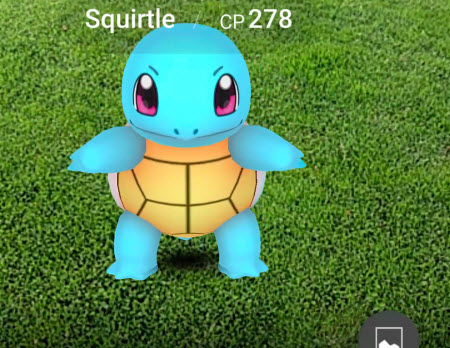Will ‘Pokémon Go’ Find an AR Audience?

Like a lot of people, Dmitri Williams had never heard of Pokémon Go until it started trending on social media on Saturday, July 9 — and when his daughter downloaded it the next day.
“She said she wanted to go play with it outside,” said the CEO of gaming research firm Ninja Metrics and an associate professor at the University of Southern California. “That never happens, so I was all for it.”
SETS A SALES RECORD
By July 13, the augmented reality game had become the biggest mobile game in U.S. history, based on its 21 million active users, beating out 2013’s Candy Crush Saga and 2012 release Draw Something, according to data from SurveyMonkey. Three days into its release, Pokémon Go had more users than Twitter, and was No. 1 on both the Google and Apple App Store charts.
As of last Wednesday ( July 13), Pokémon Go attracted just under 21 million daily active users in the United States, surpassing Candy Crush Saga’s rumored peak U.S. smartphone audience of 20 million users and making it the biggest mobile game in the nation’s history.
How did a title from a little-known developer (Niantic) become an overnight hit? According to Williams and other analysts, the right confluence of events occurred: Smartphone usage is now ubiquitous; people are comfortable with using geolocation technologies; and the Pokémon franchise already had a dedicated fan base.
“You’ve got a perfect storm of social and technological things happening,” Williams said. “You can expect a zillion copy cats, because how these things work. This may or may not be a one-hit wonder, but gaming developers are creative, and they’ll do more with augmented reality than finding a Pokémon at your corner grocery store.”
The smarter way to stay on top of the multichannel video marketplace. Sign up below.
Augmented reality (AR) games like Pokémon Go have been made before, and have been around for decades, Williams said. But this one could be a game-changer, he and other analysts said, that gets AR out from under virtual reality’s shadow.
“VR has been getting more of the headlines, but AR is consistently a more valuable technology,” Joost van Dreunen, CEO of New York-based video game data and analysis firm SuperData Research, said. “The two have long been lumped into the same bucket, but what Pokémon Go does is show everyone what can be done with AR, pushes it to the foreground.”
The consensus among industry observers is that the game’s novelty will wear out sooner rather than later, van Dreunen said. But Pokémon Go helped raise the stock of Nintendo — which has a 32% share of the franchise — by nearly 35% by the end of trading on July 13. So it’s a safe bet that others in the gaming and augmented reality space will look to repeat its success.
TEST OF TIME LOOMS
“This clearly demonstrates that AR can cross over into the mainstream on the devices people already have in at least some cases — you don’t need a bulky, expensive headset to use Pokémon Go, and that’s its power,” Jan Dawson, chief analyst with Jackdaw Research, said. “As such, it may help the concept of AR, but it doesn’t necessarily do anything for the kind of AR and VR experiences big companies are piling so much money into.”
The real test for Pokémon Go is whether people are still playing it weeks from now, Dawson said. That’s because the game is time-intensive, requires travel and relies on nice weather to keep users wandering around, looking for the hidden animals that make up the main part of the game. That combination won’t last forever, he said.
“The user experience has to be good, and they’ve done a good job on this,” Brian Blau, research vice president for per sonal technologies for Gartner, said. “But I don’t know if this changes the conversation for AR. AR games have been around on smartphones for a very long time. And they’re all gone now.”
If anything, Blau added, Pokémon Go was a much-needed shot in the arm for Nintendo and its investors, who’ve seen the gaming company lag behind rivals Sony and Microsoft for years.
Michael Pachter, managing director of equity research for Wedbush Securities, said much the same. The game brings together strong assets in Nintendo and Pokémon, but, “It’s only been a week, so premature to make the call on the game’s success.
“I think the success is more attributable to the intellectual property than to the game play. We’ll see if there is another successful AR game,” he said.
“My bias is that the game has challenges to remain on the top of the charts. It requires activity, which is anathema to couch potatoes, and sucks up battery life, which is anathema to Snapchat users,” Pachter added. “I think it will run its course at the top in a month or so.”
